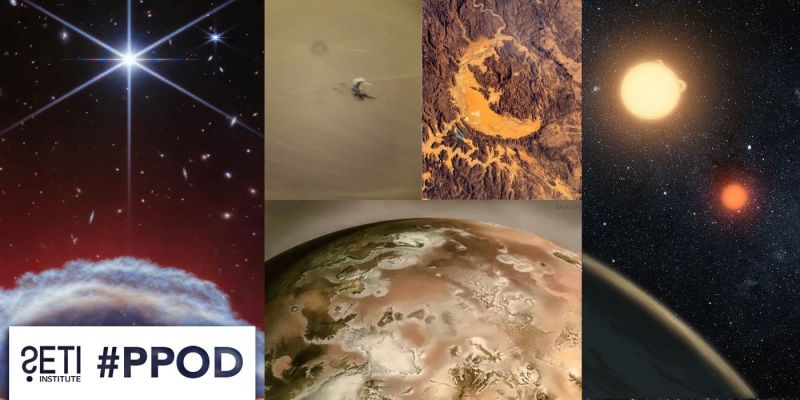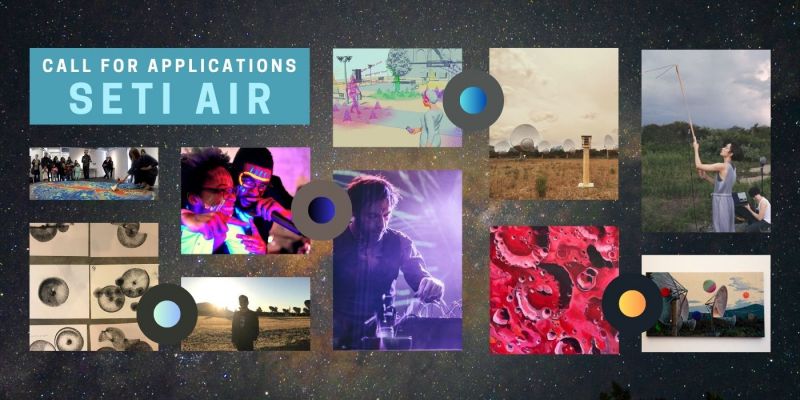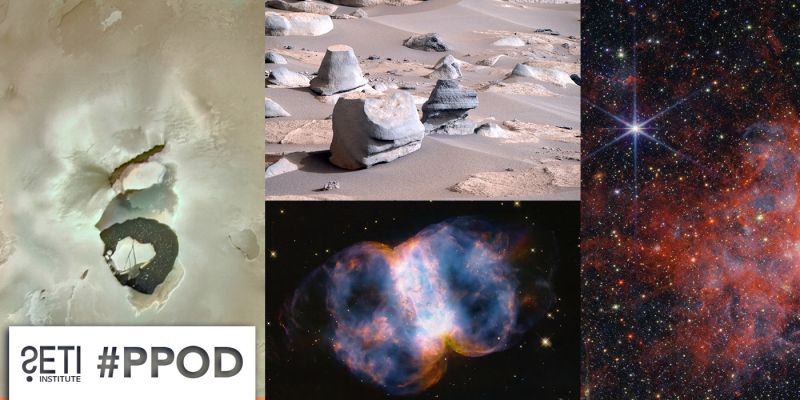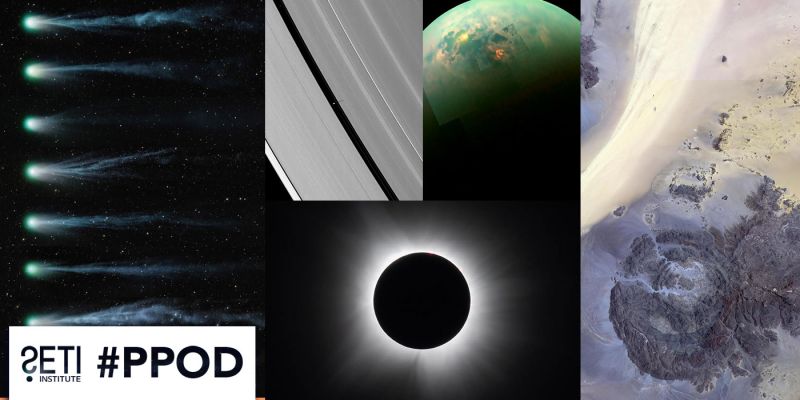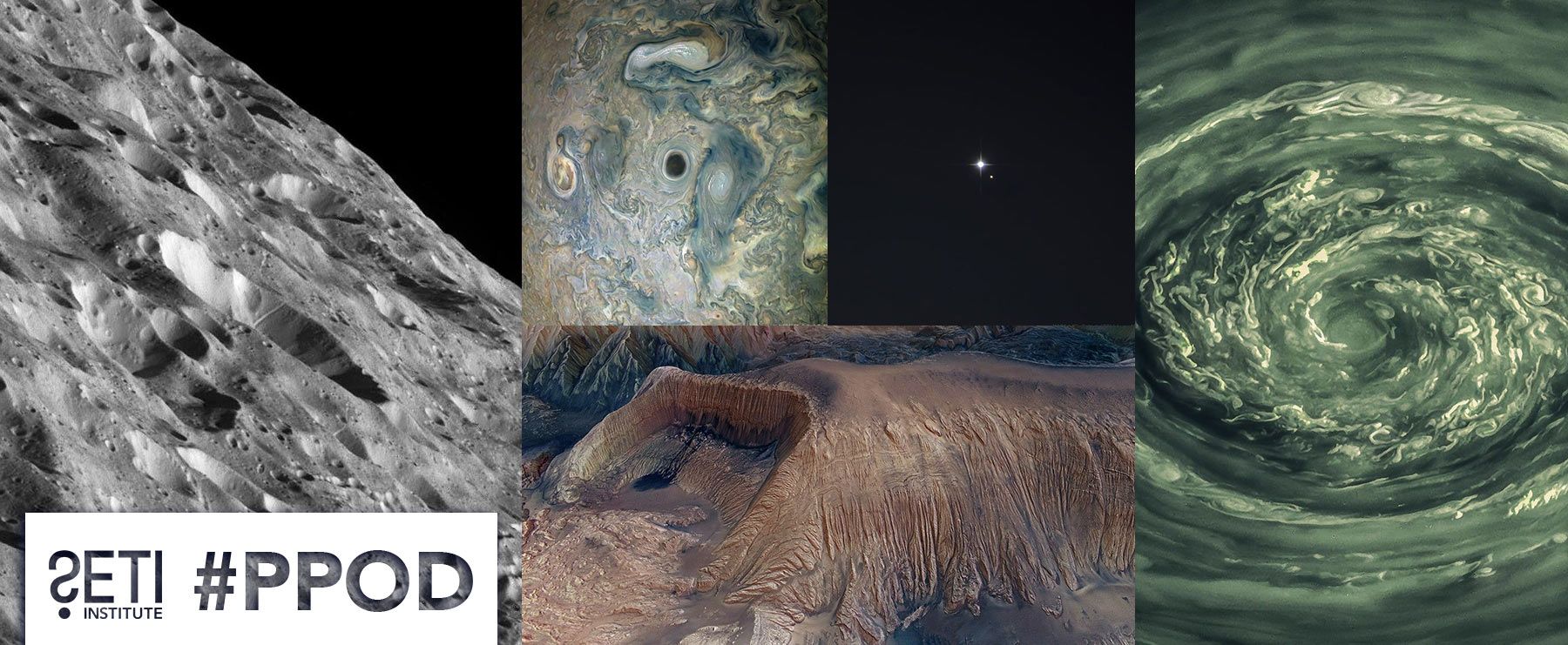
Planetary Picture of the Day
Week of November 7, 2022
A few glimpses of what’s going on in our crazy solar system!
Monday, November 7, 2022
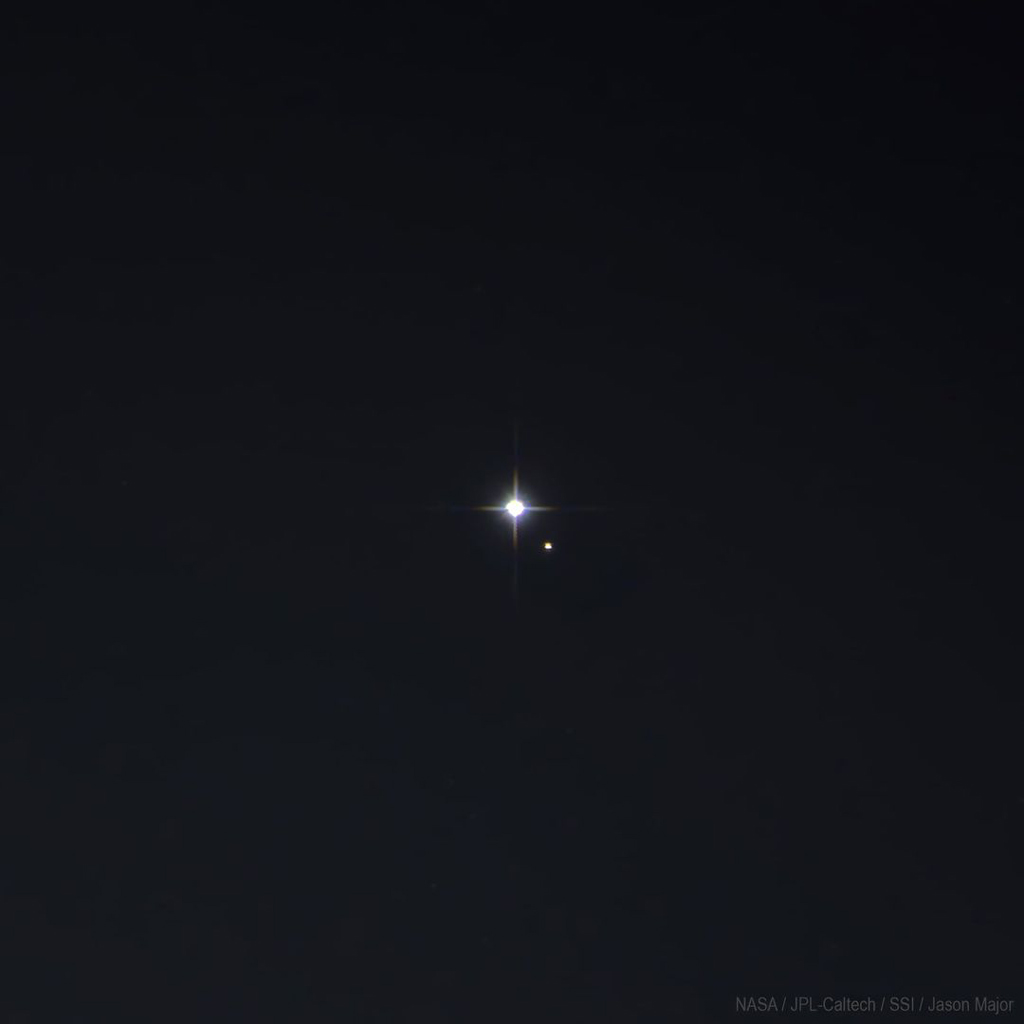
Credit: NASA/JPL-Caltech/Space Science Institute / CICLOPS Cassini Imaging / Jason Major
A Distant Look at Home
Seen here are the Earth and the Moon as captured from Saturn by NASA's Cassini spacecraft on July 19, 2013, over 1.44 billion kilometers away.
Tuesday, November 8, 2022
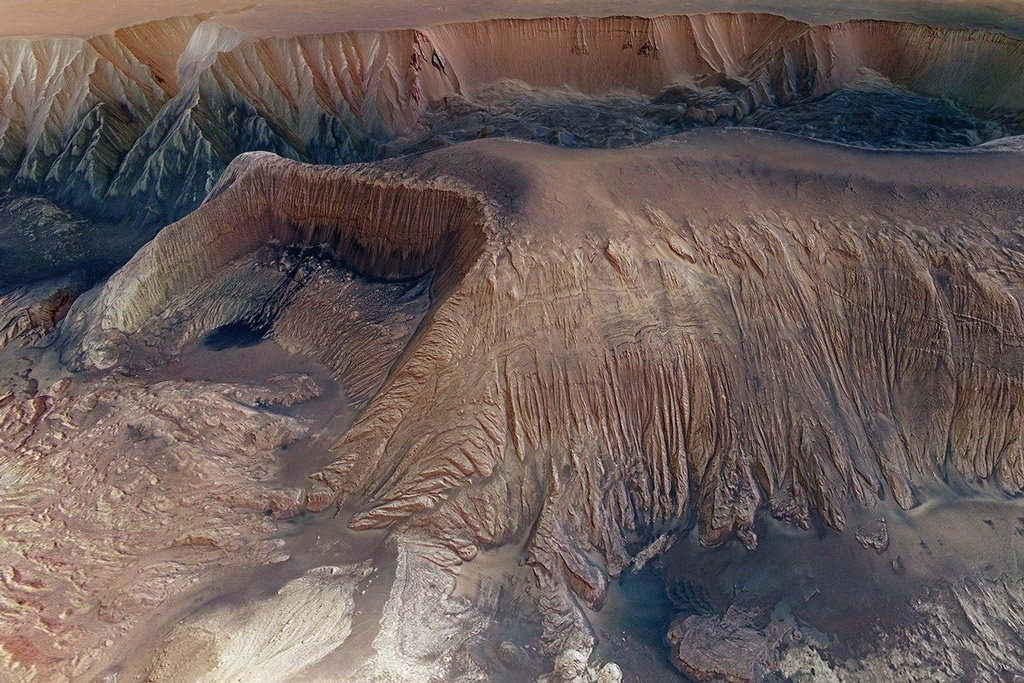
Credit: ESA/DLR/FU Berlin (G. Neukum)
Hebes Chasma, Valles Marineris, Mars
The details of the central mesa inside Hebes Chasma are seen in close-up detail in this perspective view. A horseshoe-shaped chunk has been taken out of one side of the mound (left in this image); the material has slumped down onto the floor of the valley below. A dark patch appears to pool like spilt ink across the debris. It is most likely loose material that has slid down the walls from an intermediate layer. Melted ice could have played a role by weakening the rocks to create its flow-like appearance.
Along the side of the mound fine horizontal layering is seen. The layers likely comprise a mix of wind-blown dust and ancient lake sediments, along with remnants of the older plateau.
Wednesday, November 9, 2022
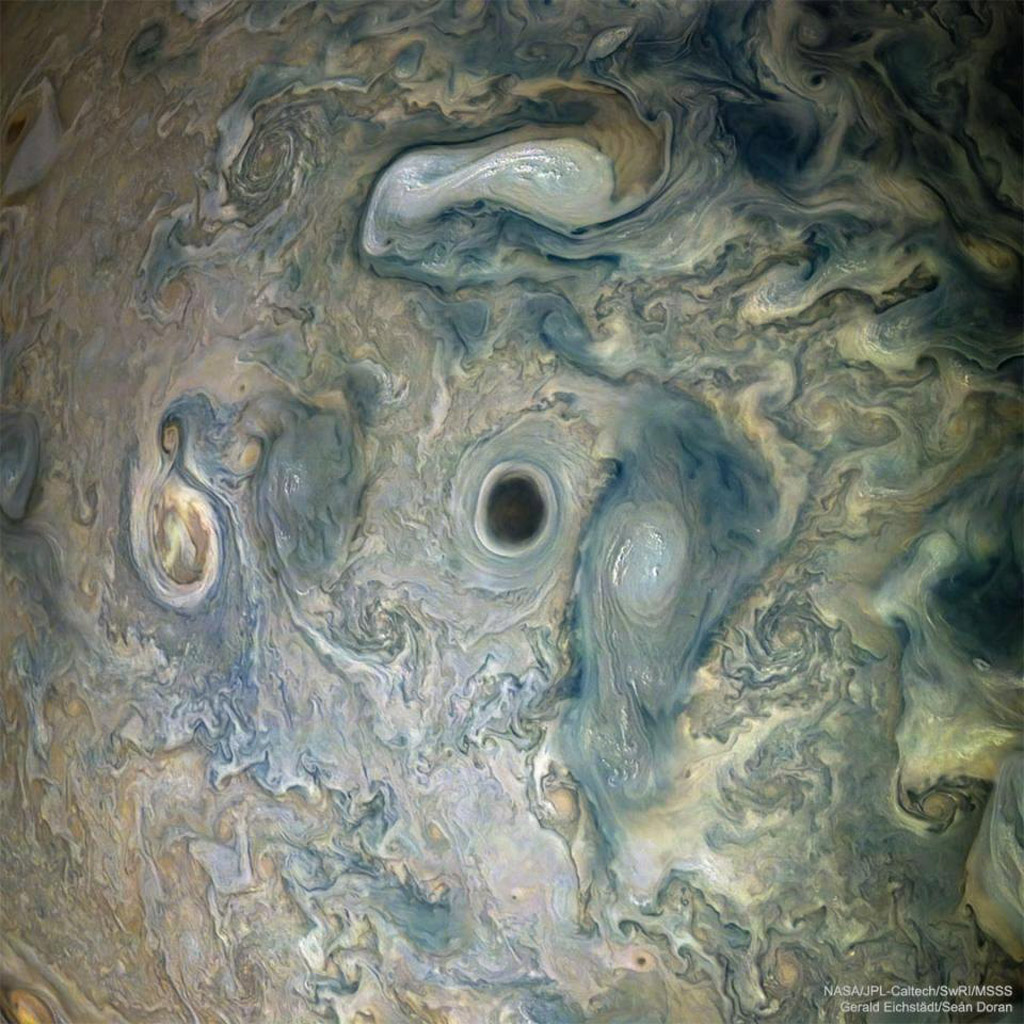
Credit: NASA, Juno, SwRI, MSSS
Processing & License: Gerald Eichstädt & Sean Doran
Jupiter Abyss
What's that black spot on Jupiter? No one is sure. During a pass of NASA's Juno around Jupiter, the robotic spacecraft imaged an usually dark cloud feature informally dubbed the Abyss. Surrounding cloud patterns show the Abyss to be at the center of a vortex. Since dark features on Jupiter's atmosphere tend to run deeper than light features, the Abyss may really be the deep hole that it appears -- but without more evidence that remains conjecture. The Abyss is surrounded by a complex of meandering clouds and other swirling storm systems, some of which are topped by light colored, high-altitude clouds. The featured image was captured while Juno passed only about 15,000 kilometers above Jupiter's cloud tops.
Thursday, November 10, 2022
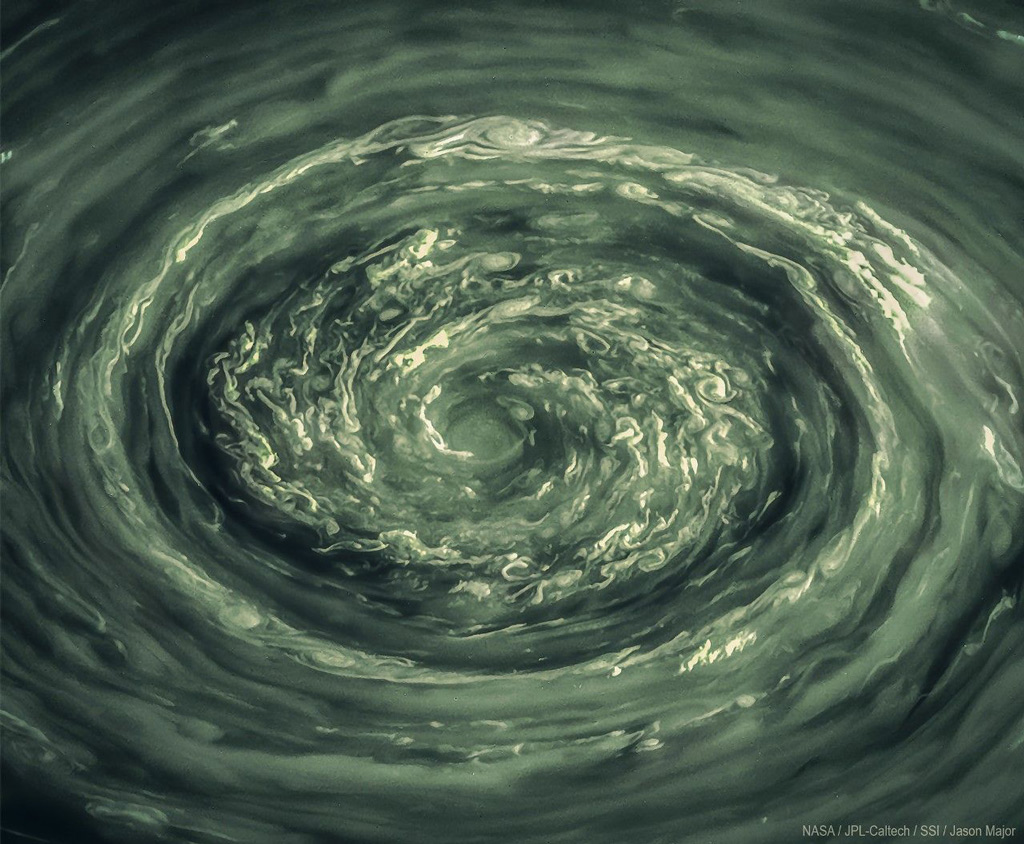
Credit: NASA/JPL-Caltech/SSI/J. Major
Saturnian Storm
Check out this 2000-km-wide vortex of swirling clouds circling Saturn's north pole! This image was captured in polarized light by the Cassini Saturn spacecraft on Nov. 27, 2012 and has been adjusted to approximate the visible-light coloration of the area at the time.
Friday, November 11, 2022
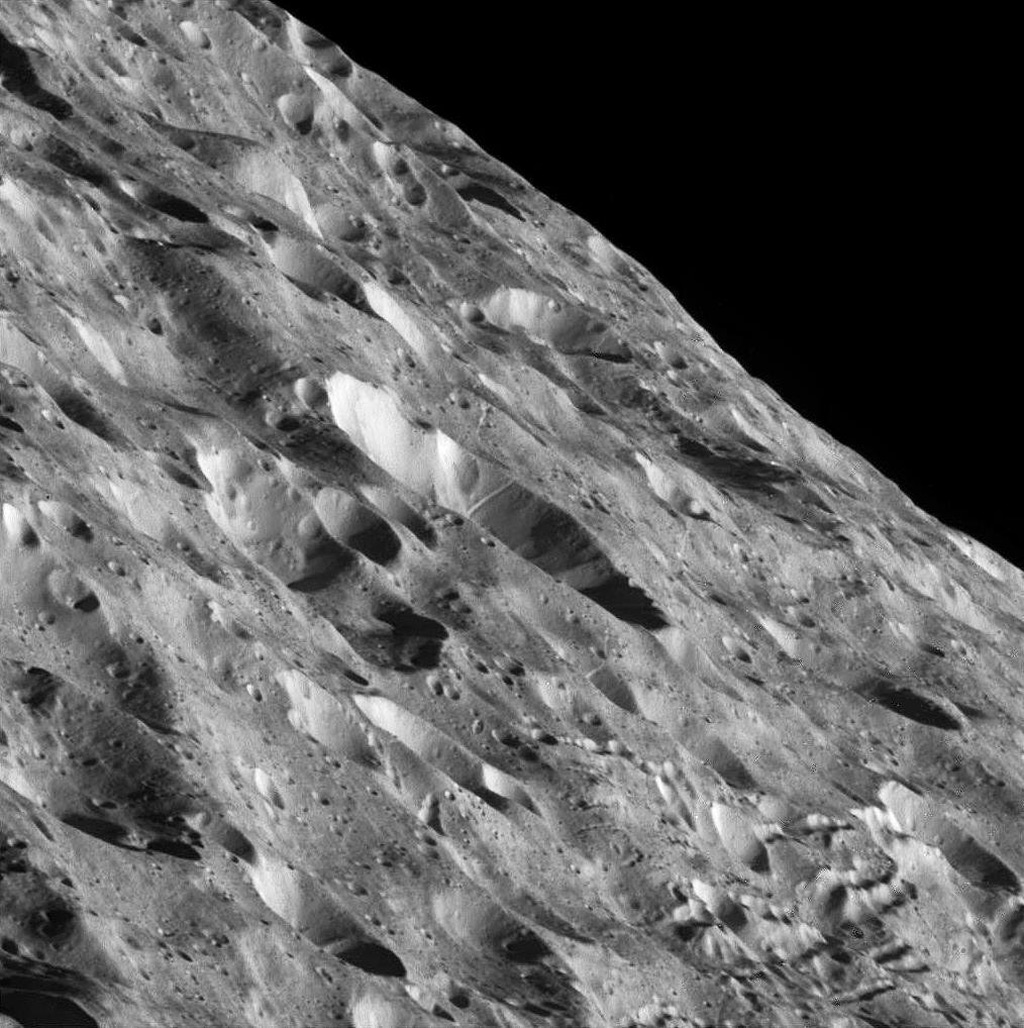
Credit: NASA / JPL / Space Science Institute / J. Major
Rhea
On 23 December 1672, Saturn's moon Rhea was discovered by astronomer Giovanni Cassini. And now, here is Rhea as seen by the Cassini spacecraft on January 11, 2010 from about 70 kilometers above the surface.

